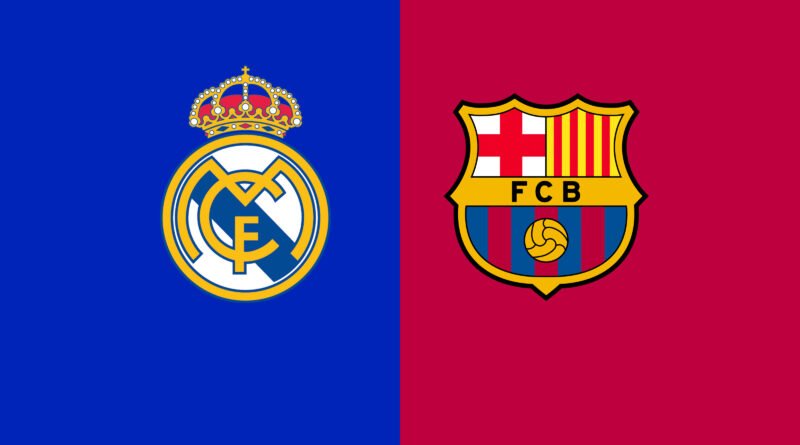Spain’s Study Reveals Top Barcelona and Real Madrid Players Over 70 Years
Speed-read
- A new scientific study looked at FC Barcelona and Real Madrid from a different perspective: footballers were compared with one million “virtual players,” models combining the best and average stats of real players to see who was most productive over the last 70 years.
- To ensure fairness, scientists didn’t just look at real players—they created virtual players, allowing a position-by-position comparison of performance across both teams.
- The results show that, to date, Real Madrid’s goalkeepers and midfielders have been more productive than those of FC Barcelona; defenders are tied, while Barcelona’s forwards outperformed Real Madrid.
- The method tracks games, goals, seasons, and titles to measure each player’s overall contribution.
- This approach can also be applied to sectors like healthcare, education, or business.
Founded more than 120 years ago, FC Barcelona and Real Madrid today have millions of fans around the world and are among the most famous football clubs ever. While their reputation was originally built by founders like Joan Gamper and Juan Padrós, a new scientific study looked at the clubs from a completely different perspective: footballers were compared with as many as one million virtual players, mathematical models that combine the best and average statistics of real players, to discover who has truly been the most productive in the last 70 years.
In the study, “A new approach for measuring productivity gaps across groups: an application with historic footballers from FC Barcelona and Real Madrid,” Professor Daniel Santín from the Department of Applied and Public Economics and Political Economy at the Complutense Institute of Economic Analysis (ICAE) and Professor José Manuel Cordero Ferrera from the University of Extremadura analyzed football players from FC Barcelona and Real Madrid using a new approach.
Both professors shared with Unknown Focus how they came up with the study and why its findings matter for other sectors, including toxic productivity.
They included footballers who played for both clubs over 70 years, from 1955 to 2024, divided by positions: goalkeepers, defenders, midfielders, and forwards. The data were collected from the official club websites and sometimes supplemented with information from Wikipedia. Only players who played at least 100 official matches were included in the analysis.
To ensure fair play, scientists did not look only at real players. Instead, they created “virtual players,” also known as synthetic DMUs. These virtual players are a mathematical instrument used to analyze the best performances of real footballers within their team. One million of these virtual players were generated, allowing the comparison of the best practice technologies of real players by position in both teams from a mathematical perspective.
How does it work?
The method is based on the concept of productivity, which relates output dimensions like goals, games, and national and international titles to the number of seasons that players were in Real or Barcelona. On one hand, players are evaluated within their teams, and on the other hand, players from each team are grouped by position to compare their average productivity through the average performance of virtual players. For example, Keylor Navas played many games and won many titles in relatively few seasons for Real Madrid, making Real’s goalkeepers’ technology dominate Barça’s technology.
Scientists tracked five key indicators: the number of seasons players spent at the club (this is the input, because more seasons potentially mean more output); the number of matches played; the number of goals scored (except for goalkeepers); and the number of national and international titles won. The results showed interesting differences. Real Madrid’s goalkeepers were the most productive, while the club’s defenders and midfielders also had a small advantage over Barcelona’s counterparts. On the other hand, Barcelona’s forwards outperformed Real Madrid’s forwards. Overall, Real Madrid had higher total productivity thanks to superior performances by goalkeepers, defenders, and midfielders, while Barcelona excelled in the forwards’ category.
Details for football enthusiasts
After analyzing players by position, scientists also assessed their super efficiency, which allows comparing the best player in each category throughout the history of both clubs. Among goalkeepers, the most efficient are Carlos Busquets (Barcelona) and Keylor Navas (Real Madrid). In defense, Ronald Koeman (Barcelona) and Fernando Hierro (Real Madrid) stood out. Among midfielders, the most efficient are Seydou Keita, Cesc Fàbregas, and James Rodríguez, while icons such as Xavi, Sergio Busquets, Toni Kroos, and Michel had more titles over a longer period but lower super-efficiency due to their longer tenure at the club. In the forwards’ category, the top players are Lionel Messi (Barcelona) and Cristiano Ronaldo (Real Madrid).
The analysis also shows the players’ impact on team productivity. For example, Ronald Koeman increased Barcelona’s defensive efficiency by 35.9%, while Fernando Hierro’s contribution to Real Madrid’s defense is 10.75%. Cristiano Ronaldo had a greater impact on Real Madrid’s forwards than Messi on Barcelona’s, showing that super-efficiency measures a player’s contribution to the entire team, not just goals scored or titles won.
This innovative method enables a fair comparison of players and can be applied to historical data analysis, player recruitment, transfer simulations, and team lineup optimization. The study demonstrates that a footballer’s productivity does not depend solely on goals or the number of matches played, but on their overall contribution to the team.
How did the idea for this study arise, and what do you hope this study could potentially change? Can this approach be used outside of sports, for example, in health, education, or economics?
Professor Santín: The study proposes a methodological innovation aimed at solving a common problem in empirical studies focused on measuring productivity when attempting to measure differences between units that belong to different groups. In these cases, to make valid comparisons, it is necessary to rely on a reference group or meet a series of assumptions that can bias the comparisons. Our work proposes an innovative approach to address this problem, consisting of the use of a synthetic reference group, which makes it possible to measure the productivity gap between different groups more objectively and flexibly, without the results depending on the particular characteristics of a real group chosen as a reference.
To illustrate the usefulness of this technique, we thought of conducting a study using data from a sport as popular as football, of which we are both great fans. Since we are both university professors, the advantage of this application is that students pay more attention and quickly realize its full potential. Then came the idea of comparing historical footballers from the two main Spanish clubs, FC Barcelona and Real Madrid. This allowed us to show, in an understandable and engaging way, how the new method offers clearer and more comparable results than traditional approaches. Additionally, the application produces results that may be appealing to fans of both clubs, especially regarding the identification of players who have had the best performance in terms of productivity during their careers.
What we hope this study could change is the way productivity comparisons are conducted between units belonging to different groups. By providing a common and synthetic reference point, the proposed technique allows for more objective and comparable evaluations that can be applied in different areas beyond sports, such as business environments or the management of public services like hospitals, courts, or schools. Our practical example focused on football because of our interest in the sport as fans and because it makes communicating results easier. In these contexts, it is common to make comparisons between public and private centers or between municipalities with different geographic locations, so the proposed methodology for analyzing the performance of units belonging to different groups would be easily adaptable to these contexts.
I find this interesting. “The analysis period covers the last 70 years, from the start of European competitions to the present, that is, from the 1954/55 season to 2023/24.” This is quite a long period. Looking at the period from 1954 to 2024, what have you noticed regarding data availability, and how much has technological advancement helped in this case?
Professor Cordero: From the beginning, we were clear that if we wanted to analyze the performance of the best players in the history of each club, it was necessary to include players from different eras. Initially, we collected data from players of earlier decades (from the 1920s to the 1950s), but after exploratory analysis of the data, we realized that including them could bias the analysis because they had far fewer titles available, playing only national competitions. Therefore, we finally decided to restrict the analysis to the seasons in which European competitions began.
The note about data availability seems very accurate to us. In our search for information to conduct the study, we found that, thanks to the development of big data, for the most recent players, we could access a much larger volume of data, such as assists, shots on target, successful passes, or successful dribbles. However, these statistics were not available for players before 2000, so we ultimately decided to use a series of simple indicators, such as the number of matches played, goals scored, and titles won, for which data were available for a larger number of players, thus maintaining the idea of evaluating historical players from each club and not only the most recent ones.
“Results show that, to date, Real Madrid’s goalkeepers and midfielders were more productive than those playing for FC Barcelona; there is a tie for defenders, while the productivity of FC Barcelona’s forwards was higher than those playing for Real Madrid.” Were you surprised by these results?
Professor Cordero: The results for the entire set of players from each club did not surprise us too much, since Real Madrid’s record of titles won slightly exceeds that of FC Barcelona, so a slight advantage for Madrid players was expected. In any case, the existing differences are not too significant in most positions, being notably higher only for Real Madrid’s goalkeepers.
What surprised us were some of the players identified as the most productive. For example, among midfielders, we did not expect to find two players with such a short tenure, like James Rodríguez or Seydou Keita, in the first position of the ranking. Something similar occurs with goalkeepers, with Carlos Busquets and Keylor Navas occupying the top positions. However, if we look at the titles obtained by these players, we can observe a common pattern in all of them: many collective successes during the years they spent at their respective clubs, which makes them very productive players.
Does your method allow for reliably tracking efficiency over different periods, considering the wide range of years included?
Professor Santín: In reality, the proposed method is intertemporal, that is, it does not measure changes across different periods. However, a natural extension of the proposed methodology would be to adapt it to a dynamic context, thus allowing for measuring changes in the performance of units across different periods. This is something we are currently working on and hope to present in a future study.
Toxic productivity makes people feel they must always give more and more, leading to stress, burnout, and decreased quality. To what extent could your findings help in these cases?
Professor Santín: This question is extremely interesting. Certainly, productivity is always associated with economic production, without taking into account that in this process, excessive pressure leads to complaints, poorer quality, errors, etc. Our methodology can be easily adapted to incorporate quality variables in service delivery; we would simply need to have the information. In this case, given the same resources and production, units or groups of units with better quality in what is produced will be considered more productive.
How do player transfers affect productivity, and would it be useful to include these effects in studies like yours? In practical terms, does your study apply directly to sports management?
Professor Cordero: A similar question was asked at a scientific conference where we presented the preliminary results of this study, and it made us consider possible alternative measures of player productivity. One of them, which we assume this question refers to, would be to measure a player’s productivity, taking into account their market value. Platforms such as Transfermarkt provide this value, and from there, taking into account that much more information is now available, we could start measuring the productivity of each player or team and see how it changes over time.
We consider that this alternative approach could be of great interest, especially to provide useful information to sports managers, so we do not rule out addressing it in future studies. However, the focus of the present research was on developing a novel methodology to measure the productivity of units belonging to different groups, and to demonstrate its usefulness, we considered an analysis based on simple and comparable indicators to be much more illustrative.
Over more than 120 years, FC Barcelona and Real Madrid have built a legacy that goes beyond football, captivating millions of fans around the world. This study adds a scientific layer to that legacy by measuring player productivity not only through traditional statistics but also through comparisons with one million virtual players. By combining a rich football history with cutting-edge analytical methods, the research demonstrates that progress in sport can be studied, quantified, and understood, providing new insights for fans, analysts, and future generations of players. Ultimately, a love for football, shaped by more than a century of tradition, meets the precision of science, creating methods that can also be applied across numerous other sectors.
Image: FC Barcelona


